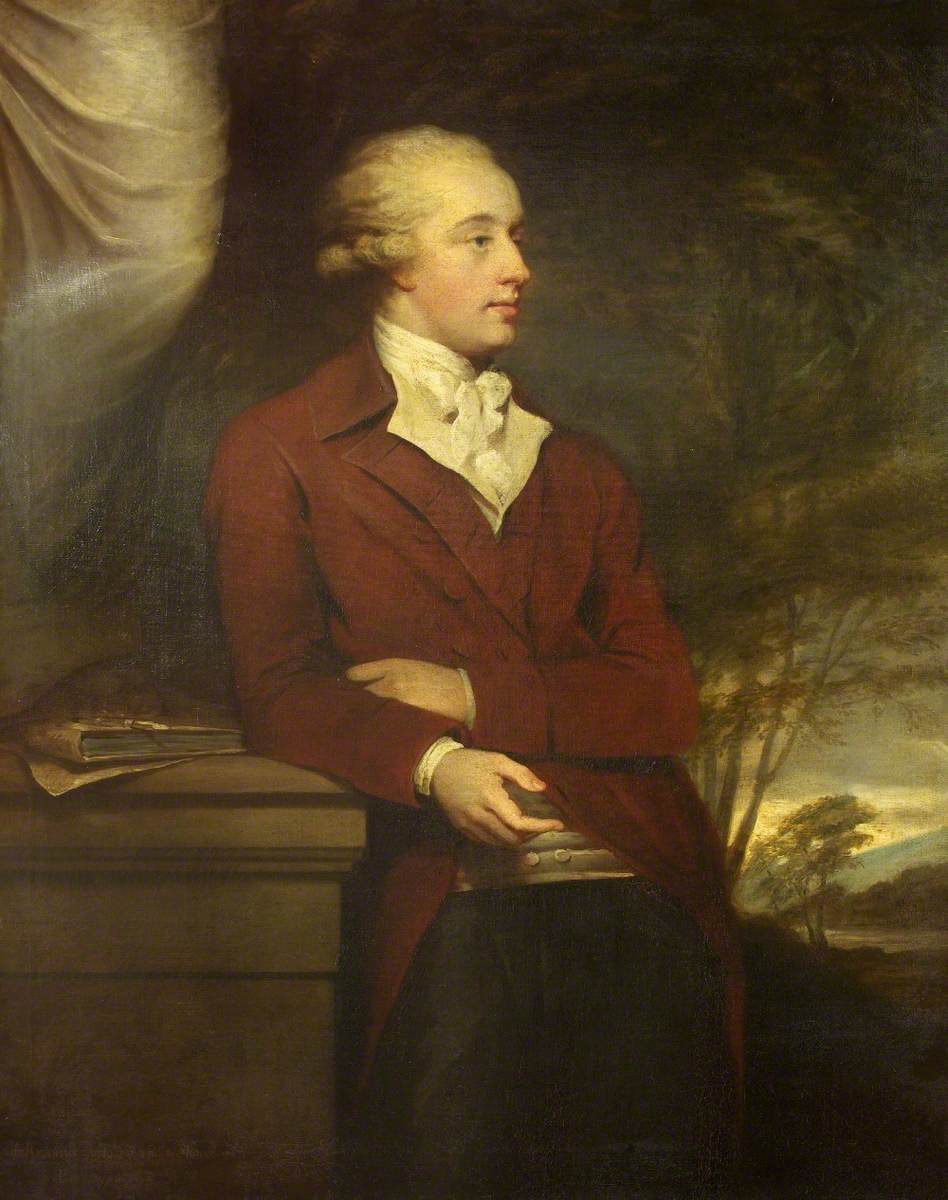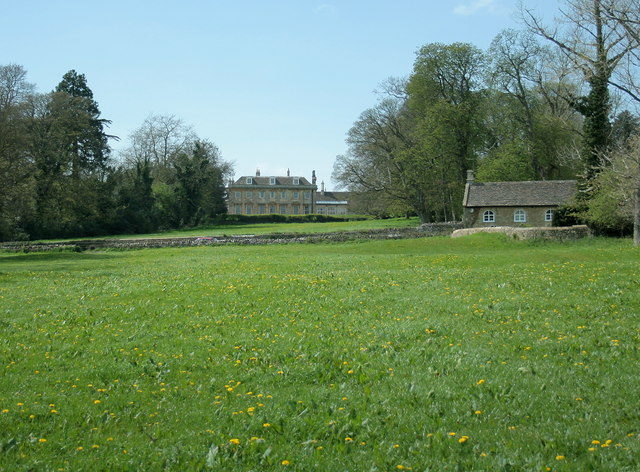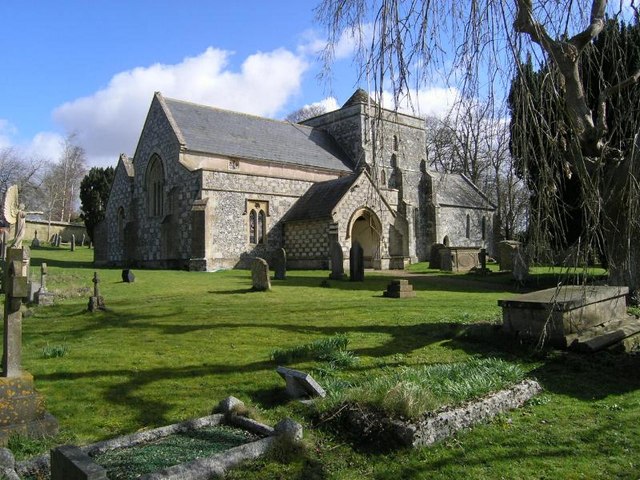|
Tilshead Lodge
Tilshead Lodge (now demolished) was a large 18th-century country house, southwest of Tilshead in Wiltshire, England, and about northwest of Salisbury. History Tilshead Lodge was built in the early 18th century, probably as a sporting lodge. By 1760 there were formal gardens to the south of the house, which was rebuilt around 1800. For most of its life the estate was a training establishment which, until the 19th century, was known as Tilshead Buildings. It is said by local tradition that Charles II stabled his horses there. The Andrews and Dury maps of Wiltshire in 1773 and 1810 show a racing circuit called "Tylshead Race" a mile south of the house, although this was probably built as a training circuit rather than for use in competitive races. The estate was bought by the War Office in two lots, in 1911 and 1933, in order to extend the Salisbury Plain Training Area. During World War II the house and grounds were used as an army base. An Ordnance Survey map published in 1958 ... [...More Info...] [...Related Items...] OR: [Wikipedia] [Google] [Baidu] |
Country House
An English country house is a large house or mansion in the English countryside. Such houses were often owned by individuals who also owned a town house. This allowed them to spend time in the country and in the city—hence, for these people, the term distinguished between town and country. However, the term also encompasses houses that were, and often still are, the full-time residence for the landed gentry who ruled rural Britain until the Reform Act 1832. Frequently, the formal business of the counties was transacted in these country houses, having functional antecedents in manor houses. With large numbers of indoor and outdoor staff, country houses were important as places of employment for many rural communities. In turn, until the agricultural depressions of the 1870s, the estates, of which country houses were the hub, provided their owners with incomes. However, the late 19th and early 20th centuries were the swansong of the traditional English country house lifest ... [...More Info...] [...Related Items...] OR: [Wikipedia] [Google] [Baidu] |
Richard Colt Hoare
Sir Richard Colt Hoare, 2nd Baronet Fellow of the Royal Society, FRS (9 December 1758 – 19 May 1838) was an English antiquarian, archaeologist, artist, and traveller of the 18th and 19th centuries, the first major figure in the detailed study of the history of his home county of Wiltshire. Career and personal life Hoare was born in Barnes, Surrey, and was descended from Richard Hoare (banker), Sir Richard Hoare, Lord Mayor of London, the founder of the family banking business, Hoare's Bank. His parents were Sir Richard Hoare, 1st Baronet (1735–1787) and Anne Hoare (1737–1759). He was educated at preparatory school at Mr. Devis's school, Wandsworth, and afterwards at Samuel Glasse's school at Greenford, and was taught the Classics by the Rev. Joseph Eyre. In 1783 Hoare married Hester, daughter of William Lyttelton, 1st Baron Lyttelton. In 1785 he inherited the large Stourhead estate in Wiltshire from his grandfather, Henry Hoare, Henry Hoare II, which enabled him to pursue ... [...More Info...] [...Related Items...] OR: [Wikipedia] [Google] [Baidu] |
Demolished Buildings And Structures In England
Demolition (also known as razing, cartage, and wrecking) is the science and engineering in safely and efficiently tearing down of buildings and other artificial structures. Demolition contrasts with deconstruction, which involves taking a building apart while carefully preserving valuable elements for reuse purposes. For small buildings, such as houses, that are only two or three stories high, demolition is a rather simple process. The building is pulled down either manually or mechanically using large hydraulic equipment: elevated work platforms, cranes, excavators or bulldozers. Larger buildings may require the use of a wrecking ball, a heavy weight on a cable that is swung by a crane into the side of the buildings. Wrecking balls are especially effective against masonry, but are less easily controlled and often less efficient than other methods. Newer methods may use rotational hydraulic shears and silenced rock-breakers attached to excavators to cut or break through wo ... [...More Info...] [...Related Items...] OR: [Wikipedia] [Google] [Baidu] |
Country Houses In Wiltshire
A country is a distinct part of the world, such as a state, nation, or other political entity. It may be a sovereign state or make up one part of a larger state. For example, the country of Japan is an independent, sovereign state, while the country of Wales is a component of a multi-part sovereign state, the United Kingdom. A country may be a historically sovereign area (such as Korea), a currently sovereign territory with a unified government (such as Senegal), or a non-sovereign geographic region associated with certain distinct political, ethnic, or cultural characteristics (such as the Basque Country). The definition and usage of the word "country" is flexible and has changed over time. ''The Economist'' wrote in 2010 that "any attempt to find a clear definition of a country soon runs into a thicket of exceptions and anomalies." Most sovereign states, but not all countries, are members of the United Nations. The largest country by area is Russia, while the smallest is ... [...More Info...] [...Related Items...] OR: [Wikipedia] [Google] [Baidu] |
18th-century Establishments In England
The 18th century lasted from January 1, 1701 (Roman numerals, MDCCI) to December 31, 1800 (Roman numerals, MDCCC). During the 18th century, elements of Age of Enlightenment, Enlightenment thinking culminated in the American Revolution, American, French Revolution, French, and Haitian Revolution, Haitian Revolutions. During the century, History of slavery, slave trading and human trafficking expanded across the shores of the Atlantic Ocean, Atlantic, while declining in Russian Empire, Russia, Qing dynasty, China, and Joseon, Korea. Revolutions began to challenge the legitimacy of monarchical and aristocratic power structures, including the structures and beliefs that Proslavery, supported slavery. The Industrial Revolution began during mid-century, leading to radical changes in Society, human society and the Natural environment, environment. Western historians have occasionally defined the 18th century otherwise for the purposes of their work. For example, the "short" 18th cen ... [...More Info...] [...Related Items...] OR: [Wikipedia] [Google] [Baidu] |
Violet Bonham Carter
Helen Violet Bonham Carter, Baroness Asquith of Yarnbury, (15 April 1887 – 19 February 1969), known until her marriage as Violet Asquith, was a British politician and diarist. She was the daughter of H. H. Asquith, Prime Minister from 1908 to 1916, and she was known as Lady Violet, as a courtesy title, from her father's elevation to the peerage as Earl of Oxford and Asquith in 1925. Later she became active in Liberal politics herself, and was a leading opponent of appeasement. She stood for Parliament and became a life peer. She was also involved in arts and literature. Her diaries cover her father's premiership before and during the First World War and continue until the 1960s. She was Sir Winston Churchill's closest female friend, apart from his wife, and her grandchildren include the actress Helena Bonham Carter. Early life Violet Asquith was born in Hampstead, London, England, and grew up with politics, She lived in 10 Downing Street from 1908, when her father occupied ... [...More Info...] [...Related Items...] OR: [Wikipedia] [Google] [Baidu] |
Erlestoke
Erlestoke is a village and civil parish in Wiltshire, England, on the northern edge of Salisbury Plain. The village lies about east of Westbury and the same distance southwest of Devizes. Erlestoke Prison, the only prison in Wiltshire, is within the parish. History The ancient parish of Erlestoke was a chapelry of Melksham. The Crown was lord of the manor of Erlestoke; the first recorded grant of land was by Henry I in the 12th century. From the 16th until the early 18th the Brouncker family held land at Erlestoke, including Henry Brouncker, a Member of Parliament in the 16th and early 17th. Later owners included Peter Delmé, an 18th-century MP; Joshua Smith (1732–1819), MP for Devizes; and George Watson-Taylor (1771–1841), also MP for Devizes. The Watson-Taylors built up large estates at Erlestoke, Coulston (including Baynton House), Great Cheverell and Edington until they were divided and sold between 1907 and 1910, following the death in 1902 of Simon Watson Tay ... [...More Info...] [...Related Items...] OR: [Wikipedia] [Google] [Baidu] |
The Times
''The Times'' is a British daily national newspaper based in London. It began in 1785 under the title ''The Daily Universal Register'', adopting its current name on 1 January 1788. ''The Times'' and its sister paper ''The Sunday Times'' (founded in 1821) are published by Times Newspapers, since 1981 a subsidiary of News UK, in turn wholly owned by News Corp. ''The Times'' and ''The Sunday Times'', which do not share editorial staff, were founded independently and have only had common ownership since 1966. In general, the political position of ''The Times'' is considered to be centre-right. ''The Times'' is the first newspaper to have borne that name, lending it to numerous other papers around the world, such as ''The Times of India'', ''The New York Times'', and more recently, digital-first publications such as TheTimesBlog.com (Since 2017). In countries where these other titles are popular, the newspaper is often referred to as , or as , although the newspaper is of nationa ... [...More Info...] [...Related Items...] OR: [Wikipedia] [Google] [Baidu] |
Monkton Farleigh Manor
Monkton Farleigh Manor is a Grade I listed country house close to the village of Monkton Farleigh in Wiltshire, England. Built on the site of a Cluniac priory founded in 1125, the house is about northwest of Bradford-on-Avon and east of the city of Bath. History In 1536 Sir Edward Seymour, then Viscount Beauchamp, obtained a grant of the site and ground of the former Monkton Farleigh priory, its church, bell-tower, and churchyard, the manor and advowson of Farleigh, and all the property in Farleigh. The earliest part of the manor house, built of materials from the priory and dating from the 16th century, is on the western side. There were additions in the 17th century, and in the 18th century further extensive additions were made. Above the mullioned windows are 12th and 13th century carved fragments from the adjoining monastic site, including a coffin lid with a carved cross. The cellars of the house belonged to the original conventual buildings of the priory. Part of an ... [...More Info...] [...Related Items...] OR: [Wikipedia] [Google] [Baidu] |
Duke Of Montrose
Duke of Montrose (named for Montrose, Angus) is a title that has been created twice in the Peerage of Scotland. The title was created anew in 1707, for James Graham, 4th Marquess of Montrose, great-grandson of famed James Graham, 1st Marquess of Montrose. Montrose was elevated as a reward for his important support of the Act of Union. It has remained since then in the Graham family, tied to the chieftainship of Clan Graham. The Duke's subsidiary titles are: Marquess of Montrose (created 1644), Marquess of Graham and Buchanan (1707), Earl of Montrose (1503), Earl of Kincardine (1644), Earl Graham (1722), Viscount Dundaff (1707), Lord Graham (1445), Lord Graham and Mugdock (1644), Lord Aberruthven, Mugdock and Fintrie (1707) and Baron Graham, of Belford (1722). The titles of Earl Graham and Baron Graham are in the Peerage of Great Britain; the rest are in the Peerage of Scotland. The eldest son of the Duke uses the courtesy title of Marquess of Graham and Buchanan. The family ... [...More Info...] [...Related Items...] OR: [Wikipedia] [Google] [Baidu] |
Charles Colyear, 2nd Earl Of Portmore
Charles Colyear, 2nd Earl of Portmore, KT (27 August 1700 – 5 July 1785), known as Lord Milsington to 1730, of Portmore House, Weybridge, Surrey, was a British Whig politician who sat in the House of Commons between 1726 and 1730, when he succeeded to the peerage as Earl of Portmore. He subsequently became a Scottish representative peer in the House of Lords. He was a racehorse owner and was known as Beau Colyear for his conspicuous dress. Early life Colyear was the son of David Colyear, 1st Earl of Portmore and his wife Catherine Sedley, Countess of Dorchester, daughter of Sir Charles Sedley, 5th Baronet, MP, of Aylesford, Kent, and former mistress of James II. His mother was the owner of Portmore House, Weybridge, which became the seat of the Earls of Portmore. In 1719, he was page to the Princess of Wales. Career Milsington was returned as Member of Parliament for Wycombe on the Wharton interest at a by-election on 1 February 1726 but on account of the partiality of the re ... [...More Info...] [...Related Items...] OR: [Wikipedia] [Google] [Baidu] |
Tilshead
Tilshead () is a village and civil parish in the county of Wiltshire in Southern England, about northwest of the town of Amesbury. It is close to the geographical centre of Salisbury Plain, on the A360 road approximately midway between the villages of Shrewton and Market Lavington, and is near the source of the River Till. Its population in 2011 was 358, down from a peak of 989 inhabitants in 1951. History Salisbury Plain has much evidence of prehistoric activity. One kilometre south of Tilshead village, under the ridge of Copehill Down, is the White Barrow, a large Neolithic long barrow. To the southwest and southeast are ancient boundary ditches, partly followed by the parish boundary; the ditch in the southeast has a long barrow next to it. The name of the settlement derives from "Theodwulf's hide". In 1086, ''Tydolveshyde'' or ''Tidolthide'' was a borough and large royal estate, with a relatively large population of 164 households and nine mills. The tithing of South Tils ... [...More Info...] [...Related Items...] OR: [Wikipedia] [Google] [Baidu] |
.jpg)



.jpg)


